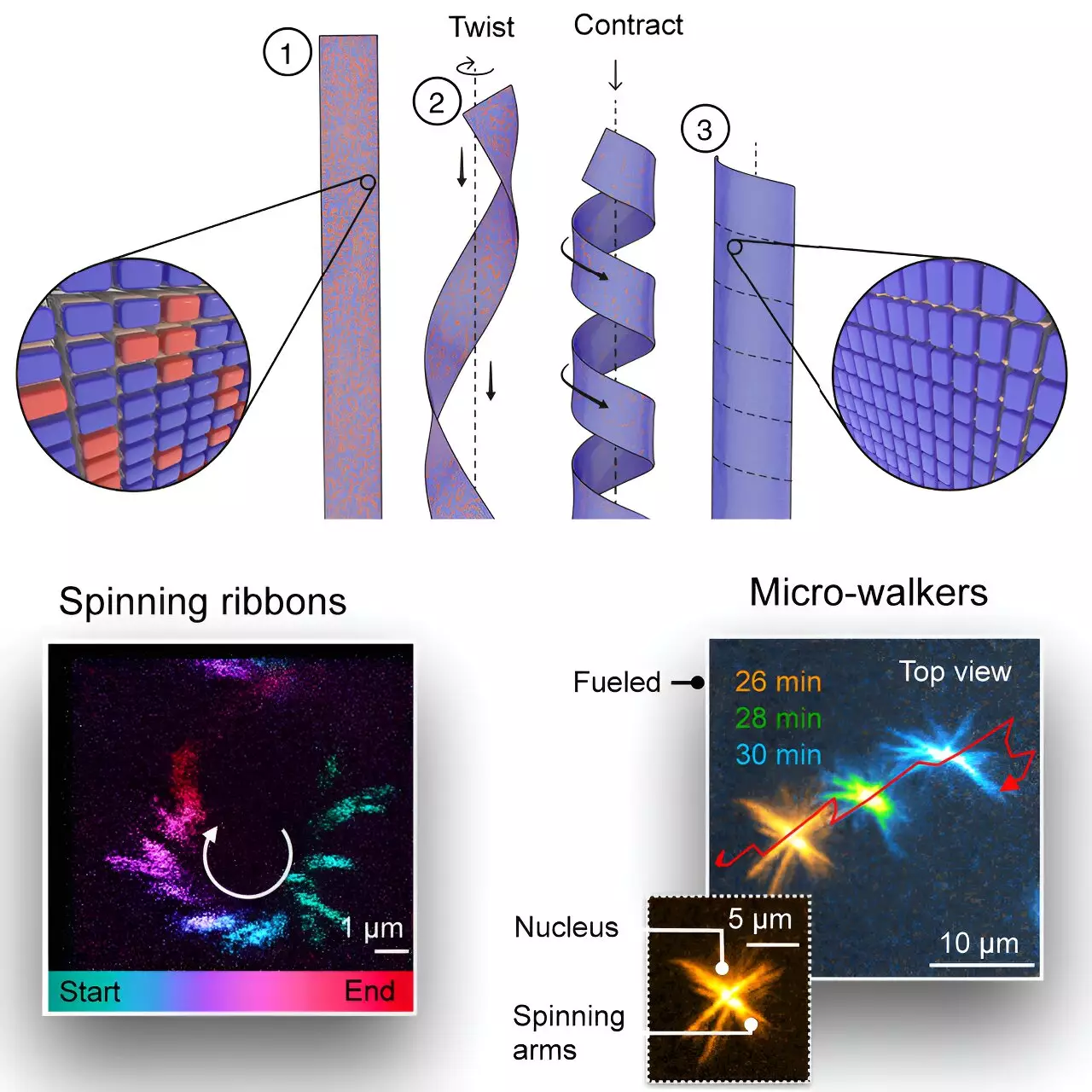In a groundbreaking study, researchers from the Technical University of Munich (TUM) have unveiled a sophisticated artificial motor that operates on a supramolecular scale. This miniature wind-up motor, composed of specially designed peptide ribbons, is capable of remarkable mechanical movement, pushing the boundaries of how we perceive motion at such a microscopic level. Unlike traditional mechanical motors, this innovation harnesses chemical energy, reflecting a significant advancement in the field of synthetic biology and materials science.
The driving force behind this technological feat stems from a keen understanding of biological systems, particularly the action of natural microorganisms. The research draws parallels with archaea, primitive bacteria that utilize adenosine triphosphate (ATP) to power their flagella, enabling them to navigate their environments. Until now, replicating such a complex process synthetically had eluded scientists. This new artificial motor mimics this biological phenomenon, showcasing not only the versatility of synthetic materials but also their potential applications across various domains.
The artificially engineered ribbons measure just a few micrometers in length and nanometers in width, yet they exhibit extraordinary capabilities once exposed to a chemical fuel. The application of this energy prompts the ribbons to organize themselves in a manner that allows them to curl into small tubular shapes. This structural change is pivotal, as it sets off a rotation that can be observed in real-time under a microscope. The research team, led by Brigitte and Christine Kriebisch along with Professor Job Boekhoven, has demonstrated that the rotation speed is directly proportional to the fuel quantity, while the rotation’s direction can be manipulated through the design of the molecular components. This fine-tuned control is a thrilling development for future applications.
One of the most exciting prospects of this research lies in its potential application in nanotechnology, particularly in the medical field. The ability of these peptide ribbons to generate enough force to propel micrometer-sized objects could pave the way for the creation of “micro-walkers” that navigate the human body. These tiny machines could be engineered to transport therapeutic agents to targeted sites, such as tumor cells, improving the efficacy and precision of treatments. However, while the foundational technology is promising, the current chemical fuel is not suitable for biological applications due to its potential toxicity. This limitation highlights the need for further research to develop safer, more effective fuels.
The development of these supramolecular motors marks a significant milestone in the integration of synthetic chemistry with biological principles. As scientists expand on these innovative designs, the potential for practical applications seems limitless. Future research efforts will be crucial in overcoming the current limitations and refining these technologies to harness their full potential for use in healthcare and beyond. This study not only sets the stage for new advancements in nanomedicine but also reaffirms the importance of interdisciplinary approaches in solving complex scientific challenges.


Leave a Reply